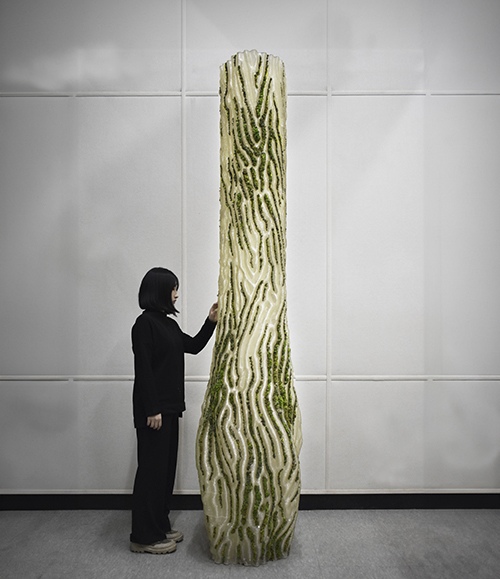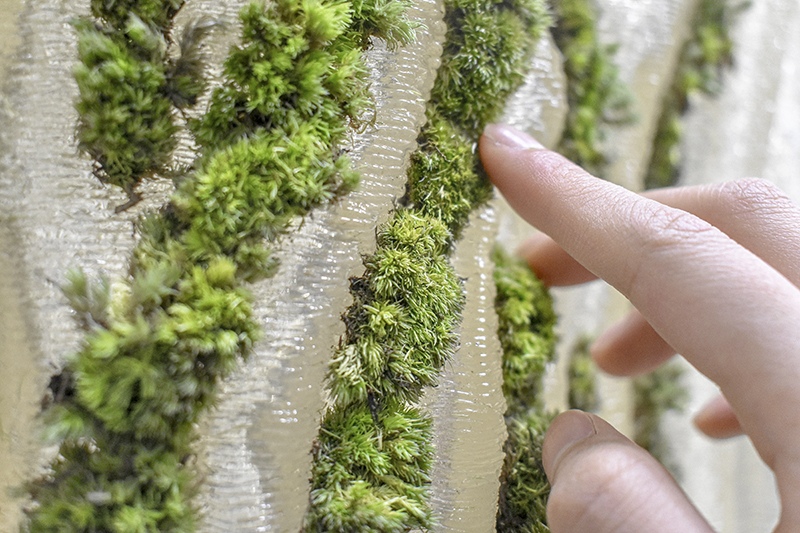
Moss Columns: Forging a New Alliance Between Nature and Technology
In the shadow of the COVID-19 pandemic, our relationship with the spaces we inhabit has undergone a profound transformation. Amid this backdrop, Yong Ju Lee Architecture introduces an innovative exploration dubbed the Moss Column—a venture that marries the essence of living organisms with the precision of architectural design. This prototype heralds a new era in construction, challenging the status quo of building materials that have remained largely static despite the push for sustainability in modern architecture.

At the heart of this pioneering project lies a simple yet profound concept: embedding moss directly into man-made materials. Mosses, with their low-profile, non-vascular structure, require no soil for nourishment, making them ideal candidates for this experiment. They anchor themselves, thriving without the need for deep roots or extensive care. This quality allows for intricate and high-resolution designs to be crafted using advanced computational tools, creating a symbiosis between the organic and the inorganic.
Employing state-of-the-art construction technologies, including a large-scale 3D printer equipped with an industrial robotic arm, the Moss Column project brings to life complex forms that were once deemed unattainable. This innovative approach does not merely aim to integrate greenery into architecture but seeks to forge a seamless bond between nature and man-made structures, reflecting a symbiotic relationship that mirrors the organic processes of nature itself.
The project utilizes a mathematical model known as the reaction-diffusion system to simulate the intricate patterns of natural growth and decay, enabling the creation of a dynamic structure where moss not only adorns but actively merges with its 3D-printed foundation. The use of Fused Granulate Fabrication (FGF) technology, operated through a 6-axis robotic arm, ensures that these designs are not only visionary but viable, marking a significant leap towards sustainable and eco-friendly construction practices.

This endeavor is more than an experiment; it is a call to rethink how we integrate the natural world into our urban landscapes. By highlighting the potential for a harmonious coexistence between digital, physical, and natural elements, the Moss Column project paves the way for future innovations in the construction industry. It stands as a testament to the possibility of a world where technology and nature are not at odds but are partners in creating a sustainable, breathable urban environment.
As we look towards the future, the implications of such integrations are vast, promising a revolution in how we conceive and construct our living spaces. With projects like Moss Column, Yong Ju Lee Architecture not only challenges the boundaries of traditional design but also invites us to envision a future where our buildings breathe life, literally and figuratively, into our cities.
Architect: Yong Ju Lee Architecture
Fabrication: Robotic Fabrication Studio from Seoul National University of Science and Technology
Design Team: Jisu Noh and Hyun Kyung Yoo

